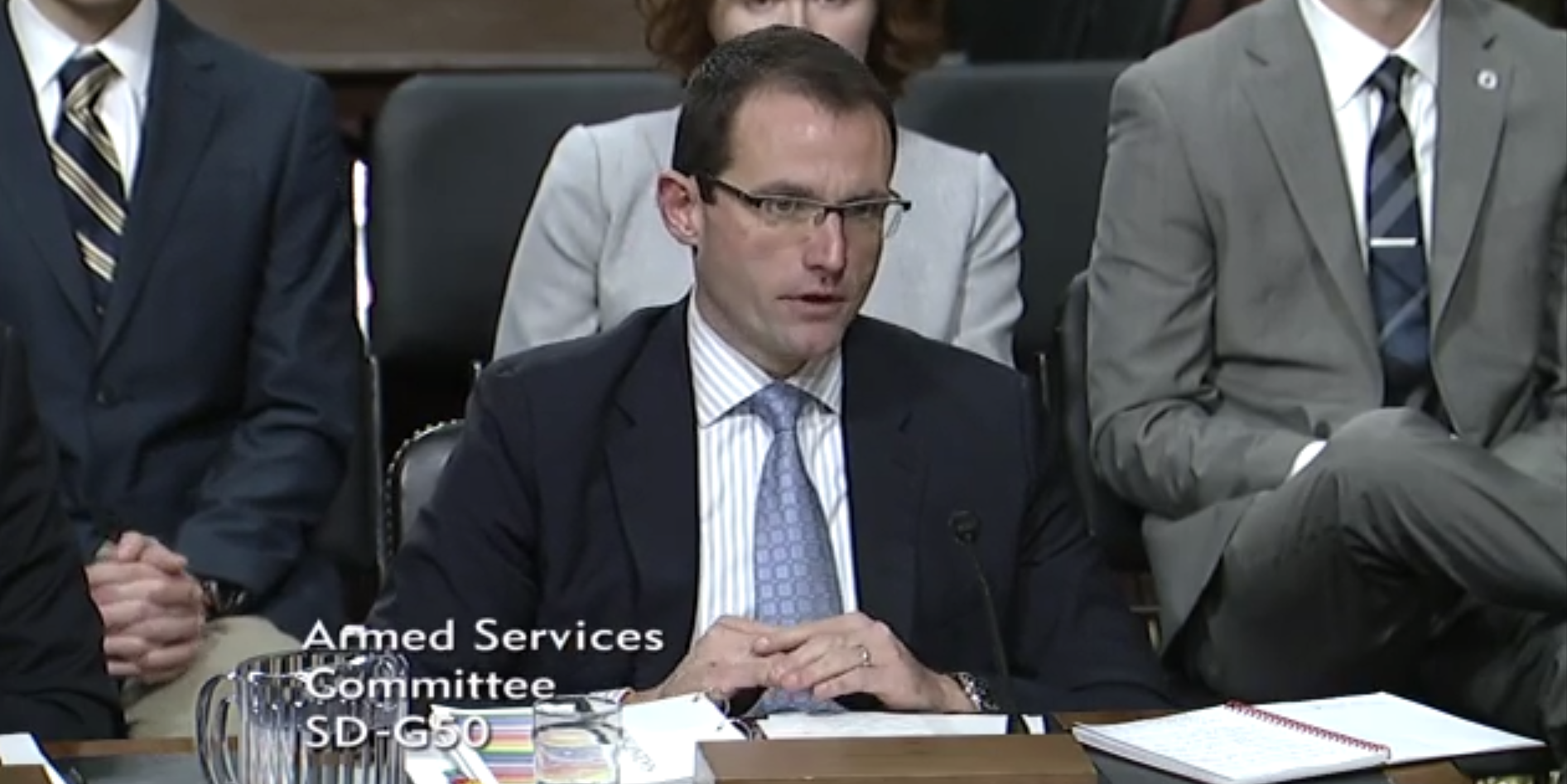
William Roper, the nominee to be the next undersecretary of the Air Force for acquisition, testifies Thursday at a Senate Armed Services Committee hearing. Screenshot photo.
The White House’s pick to take over Air Force acquisition plans to take a deep dive into two of the service’s biggest purchases, the F-35 strike fighter and B-21 bomber, to see if the established plans are enough, and if the current sustainment plan actually is sustainable.
During his confirmation hearing before the Senate Armed Services Committee, William Roper, the current head of the Pentagon’s Strategic Capabilities Office who is nominated to be the Air Force undersecretary for acquisition, said his biggest concern with the F-35 program is sustainment costs. If these costs “can’t be managed and lowered,” the service will face a bow wave of sustainment that would “threaten the force structure we buy,” which could mean the Air Force will “end up with a fewer number of aircraft,” he said.
The Air Force and Northrop Grumman are developing the B-21 Raider, and if confirmed Roper said he plans to evaluate the overall number of these bombers needed in light of the new administration’s National Defense Strategy and Nuclear Posture Review, which will be released on Friday. Roper said the Air Force should evaluate its planned bomber force structure, which he said is currently at 175 aircraft—10 more than Air Force officials had previously said.
AFA’s Mitchell Institute head retired Lt. Gen. Dave Deptula has said the service really needs closer to 282 total bombers, including 120 combat-coded B-21s.
If confirmed, Roper said he would push for a “human-driven” approach to acquisition, delegating decision-making to the lowest level and calling for rapid prototyping. However, traditional approaches are still required in some weapons system acquisition programs, he said.
Roper appeared alongside Michael Griffin, the nominee to be the Pentagon’s under secretary of defense for research and engineering. Griffin, who previously served as a NASA administrator, said heavy bureaucracy in the Defense Department has slowed research, and that should change in the near future.
“I think the remedy starts with renewing our national commitment to developing weapons systems through experiments, prototypes, operational prototypes before we commit to major weapons system acquisitions,” he said. For example, Griffin said the Air Force’s SR-71, the “most magnificent airplane ever built to date,” came from a rapid prototype that had ironed out problems associated with Mach 3 flight before acquisition began.
The Senate committee also heard from John Henderson, the nominee to be the assistant secretary of the Air Force for installations. Henderson said, if confirmed, he’d push for more direct funding authorities, alternative sources of energy, and resiliency in Air Force infrastructure.
